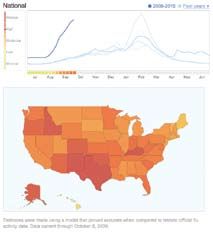Publication
Article
Pharmacy Times
Pharmacy Technology News
MarkMonitor Finds Increase in Drug Brand Abuse Online

Illegal online pharmaceutical activities are on the upswing, not only threatening the health and safety of patients, but also that of drug manufacturers and pharmacies, according to San Francisco—based brand protection firm MarkMonitor’s latest Brandjacking Index.
“Scammers are opportunists, and by targeting the supply chain, they’re positioning themselves to move the greatest amount of fake product they can,” said Frederick Felman, chief marketing officer at MarkMonitor. “This maximizes their return on the scam, but it also poses a potential danger to people’s health and safety, not to mention brand reputation.”
With patients trying to save money by turning to the Internet for drug purchases, the opportunity for online fraud and brand abuse has increased. The Brandjacking Index reports online pharmacy growth, with the cyber drugstores bringing in about $11 billion this year, up from approximately $4 billion in 2007. Of the 2930 online pharmacies MarkMonitor found in the study, only 4 were certified in the Verified Internet Pharmacy Practice Sites by the National Association of Boards of Pharmacy, and many of the noncertified pharmacies offered discounts of about 90% from prices offered by their certified counterparts. Daily visitors to these online apothecaries averaged 42,000 per site.
For a free copy of the Brandjacking Index, visit www.markmonitor.com.
Site Provides Forum for Pain, Palliative Care Pharmacists
The Southern Illinois University Edwardsville (SIUE) School of Pharmacy has launched a new Web site (www. pharmacypainsummit.com) aimed at reaching out to, and gleaning input from, practitioners in pain and palliative care pharmacy. Designed to foster ongoing discussion among these professionals, the site is structured as a blog with comment sections.
“We’re encouraging online collaboration among pharmacists and have created the site as an open, collaborative space used to foster discussion among all health care providers,” said site coordinator Chris Herndon, assistant professor of pharmacy at SIUE. “We believe hosting this space is an added benefit not only for our students, but for the entire health care community.”
The site was launched to coincide with the Strategic Planning Summit for the Advancement of Pain and Palliative Care Pharmacy early last month at the SIUE School of Pharmacy, which received full accreditation status from the Accreditation Council for Pharmacy Education earlier this year.
Google Flu Trends Tracks Pandemic

The recently expanded Google Flu Trends provides a useful, nearly realtime tool for monitoring influenza not only throughout the country, but in other parts of the world. Now covering 20 countries, including a large portion of Europe, the tracking program allows users to obtain preemptive information about where seasonal and pandemic flu is set to increase.
Unlike some flu surveillance systems that can take days or weeks to collect and release data, Google search queries can be counted instantly. In addition, the company’s analysis of last season’s figures showed that Google Flu Trends had a 0.92 correlation with official US flu data.
“Google Flu Trends makes near—realtime estimates of flu activity, complementing traditional flu surveillance systems,” said Matt Mohebbi, software engineer for Google Flu Trends. “Such early detection enables both public health officials and the public to make more informed decisions about preparing for the flu season.”
Visit Google Flu Trends at www. google.org/flutrends/.
FDA Web Page Instructs on Proper Drug Disposal
A recently launched FDA Web page provides instructions for patients on how to dispose of certain medications, including high-potency opioids and other controlled substances. The page advises patients to adhere to any disposal instructions given to them at the pharmacy where they filled a prescription, also acknowledging drug take-back programs as a valid means by which to get rid of unneeded medications. A list of designated medications (and their generic equivalents) that should be flushed down the sink or toilet is included. The FDA notes that drugs not included on the list should be disposed of by being placed in household trash receptacles after being mixed with an unpalatable substance, such as used coffee grounds or cat litter, and placed into a sealed bag or container.
Patients can locate the page by visiting www.fda.gov and clicking on “Safe Disposal of Medicines” under “Public Health Focus,” or find it here: http:// tinyurl.com/yk436oe.







